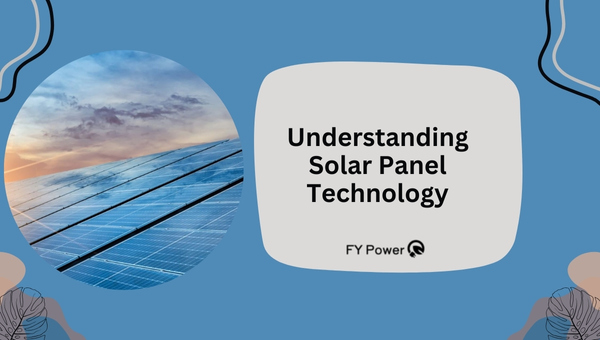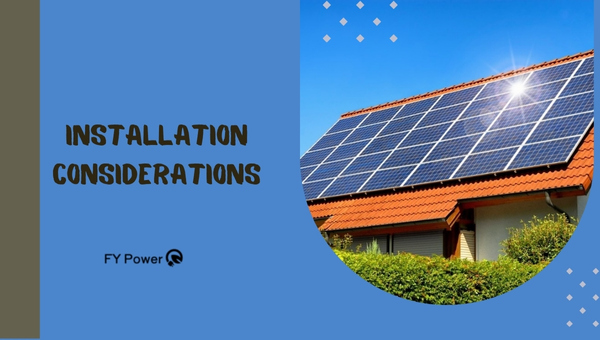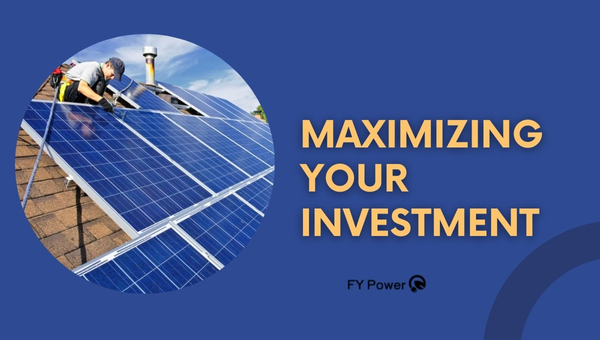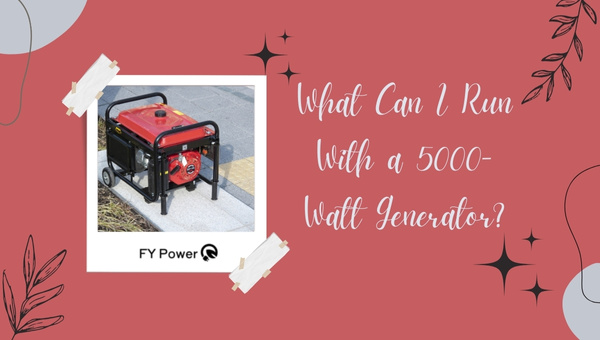When I first heard about STC solar panels, I was like a kid with a new toy. The thought of using the sun to power up my whole house? Wow! But with so many types out there, it got me thinking: What type fits my roof the best? So let’s unravel this mystery together and find which solar panel types under standard test conditions (aka STC) will light up your life!
Now, if you’re wondering what STC solar panels are all about, get ready for some eye-opening facts. This isn’t just about saving money on electric bills. It’s sort of like picking your favorite flavor of ice cream – there are a few main kinds, each with its unique taste (or in this case, benefits!).
From sleek and powerful options to the ones that let you keep more cash in your wallet; they all promise to harvest that big glowing ball of energy in the sky for your home needs.
Understanding Solar Panel Technology
Solar panels are a smart way to harness the energy from the sun. They turn sunlight into electricity that we can use in our homes and businesses.

To know how good a solar panel is, we use something called Standard Test Conditions, or STC for short. It’s like a common ground to understand solar panel performance.
The Basics you need to know
Solar panels work by catching energy from the sun with cells made of silicon. When sunlight hits these cells, it makes electricity flow. This is great because it means we can get power without using up resources or harming the planet.
Now, let me talk about STC, which stands for Standard Test Conditions. This is really important for comparing different solar panels because it gives us a consistent basis for measurement.
Imagine if we didn’t have STC – buying solar panels would be a guessing game! Here’s why it matters: STC means every solar panel is tested at 25°C (77°F), with 1,000 watts of sunlight per square meter hitting straight on, and an air mass of 1.5 – this matches midday sun with clear skies in Europe or North America.
So when you read about a panel’s power under “STC”, you know exactly how they did that test no matter where you are or who made that panel.
Also Read: Arduino Solar Power: Easy 3-Step Integration Guide
Types of Solar Panels and Their Advantages
There are quite a few kinds of solar panels out there but most fall into one of three types: monocrystalline, polycrystalline, or thin-film. Each one has its own pros and cons depending on what you need.
Monocrystalline Panels – The Efficient Option
Monocrystalline panels are top-notch because they give more bang for your buck in terms of efficiency – this means they’re really good at turning sunlight into lots of electricity even if there aren’t lots of space for them.
They’re also known for lasting longer than other types which makes them a pretty solid choice overall especially if roof space is tight but you want maximum juice!
People go for monocrystalline when they want quality and don’t mind paying a bit extra upfront because over time they save money thanks to all that efficient power production shaking out higher savings on their utility bill.
Polycrystalline Panels – The Cost-Effective Alternative
Polycrystalline panels follow right after monocrystalline ones but they don’t cost as much dough so if cash is tight these might be the way to go!
While not quite as efficient as their mono counterparts they still pack a fair punch when turning sun juice into electric current plus prices tend to be easier on the wallet making polycrystallines popular among folks wanting decent performance without breaking the bank!
They could be cool especially if you’ve got plenty of roof space up top since more area can offset slightly lower efficiency compared with mono making sure less perfect sunny days still see plenty of watts rolling in!
Thin-Film Panels – Flexibility First
Lastly, let’s chew over thin-film options; these guys stand out due to their flexibility literally! Unlike rigid traditional solar cells thin-films bend letting them hug contours like curved roofs mobile homes even apparel think wearable tech!
Plus they’re light as feathers compared to heavies like mono or polycrystal slices making install breeze lighter overall load structure beneath which might not take kindly heavyweight contenders lounging above!
Also Read: What Will A 10000 Watt Generator Run?
Comparing Performance Under Standard Test Conditions (STC)
When we look at solar panels, we often talk about their power and how well they work. That’s where STC comes in. It stands for Standard Test Conditions.
STC is like a set of rules that help us know how good a solar panel is by testing all panels the same way. This lets us compare different kinds of solar panels to see which one might be best.
How Does the Environment Impact Panel Efficiency?
Have you ever wondered if your solar panel works the same on a hot day as on a cold day? Well, that’s what we figured out with STC. It tells us how much power the panel can make when it’s put through test conditions that are always the same – like being outside at 25°C with lots of sun shining straight onto it.
But in real life, it’s not always perfect weather – sometimes it’s really hot, sometimes there are clouds or even rain. This changes how much electricity your panels can make. Let me tell you more:
- Temperature: Solar panels like certain temperatures to do their best work; too hot or too cold can slow them down.
- Sunlight: They need just the right amount of light. If clouds block the sun or if days get shorter, solar panels won’t be as strong.
- Angle: The tilt of your roof can change things too. Panels need to be angled just right to catch as much sunlight as they can.
- Shadows: Keep an eye out for trees or chimneys that might cast shadows and block some light.
So, when companies say their solar panel has a certain amount of power, they mean under these perfect test conditions (like 25°C and direct sunlight). However, because weather changes, so does how well your panel works from day to day.
Monocrystalline and polycrystalline are two popular types of solar panels – let’s look at them under STC:
- Monocrystalline Panels: These guys are made from one big crystal and usually perform better in tests because they handle heat well and convert more sunlight into power efficiently.
- Polycrystalline Panels: These ones come from lots of smaller crystals melted together. They’re usually cheaper but may not work as well when it gets super hot outside.
Also Read: How does an inverter generator work?
Installation Considerations
When you decide to go solar, knowing where and how your solar panels will fit on your roof is a big deal. You also want them to look good, right? That’s what we call “space requirements and aesthetics.” In short, it’s all about how much room you’ve got and what the panels will look like in your house.

Space Requirements and Aesthetics
Let’s talk about choosing the right kind of solar panels for your roof. We’ll look at three main types: monocrystalline, polycrystalline, and thin film. Each one has its own size needs and looks.
- Monocrystalline Panels – These guys are the sleek ones. They’re made from pure silicon slices, which makes them more efficient at turning sunlight into power. So you won’t need as many as you would with other types. Plus, they have a dark color that many people find pretty stylish.
- Polycrystalline Panels – Polycrystalline panels are a bit more affordable but usually larger because they’re less efficient than monocrystalline ones. If you’ve got plenty of space on your roof and a smaller budget, these could be for you.
- Thin-Film Panels – Now these are different! Thin-film panels can bend a little bit because they’re not made out of stiff silicon segments like the others. They are awesome if your roof is not flat or has an unusual shape because they can sort of hug the surface.
Each panel type also affects how your house will look from the outside:
- Monocrystalline panels with their black tone give a high-end finish that blends well with darker roofs.
- Polycrystalline units flash with their blueish hues under sunlight; some folks think this looks cool while others may not love it as much.
- With thin-film sections being quite discreet, if you don’t want people to notice your solar setup much, these might do the trick.
Overall, when picking out solar gear for your house:
- Look at how much room is available up there on the rooftop.
- Think about whether cutting back on space used makes sense (in case you wanna use that prime real estate for something else someday).
- Choose something that matches both style-wise and power needs-wise with what’s up there already (like shingles or tiles).
It all comes down to finding that balance between making the most of sunny days without messing up how sweet home looks!
Maximizing Your Investment
When I put my money into something, I want it to work well and last long. That’s true for solar panels, too. Solar energy is a smart choice because the sun isn’t going away anytime soon. But not all solar panels are the same. It’s about finding the right balance between what they cost and how well they work over time.

Cost vs Performance Over Time
To really understand if I’m getting my money’s worth from solar panels, I look at how they’re still doing years after I bought them. It’s like buying a car – a cheap one might save you some cash now, but if it breaks down in a year what’s the point?
- Initial Price: The first thing is how much money it takes to buy and set up different kinds of solar panels – some are pricier than others.
- Efficiency Over Time: Then there’s efficiency – this means how good the panel is at turning sunlight into electricity and if that changes as the panel gets older.
- Durability: Panels have to stand up against rain, wind, and hot sun. Some types are tougher than others.
- Maintenance Costs: There might be costs to look after or fix up your panels as time goes on.
- Energy Savings: Over the years, good panels should lower my electricity bills enough to make back what I spent at first.
It’s clear that when looking long-term, choosing solar panels isn’t just about today’s price tag—it’s considering how effective they will be in making power in your home for many years under various conditions—sunny days or cloudy skies—and this is all tied to their STC ratings.
STC stands for Standard Test Conditions—it’s like an even playing field where each type of panel shows what it can do under perfect lab conditions—no wind or clouds in sight! This gives me a number that helps me compare different types of solar tech with confidence.
So here’s my take: When finding which panel wins the long game of cost versus performance, always check those STC rates because they give me peace of mind that my investment will be solid for many sunny days to come!
FAQs
What determines my best option among these three main panel types?
Your choice in solar panels should consider factors like your budget, space availability, the climate of your location, and efficiency needs. Monocrystalline panels are highly efficient but cost more; polycrystalline panels offer a balance between cost and performance; thin-film options are best for limited spaces or flexible requirements.
How do STCs impact my choice for residential or commercial settings?
STC ratings ensure you can compare the performances of solar panels under uniform conditions. For residential use, where space might be limited, choosing a panel with high efficiency at STC might be key. For commercial settings with more space, the overall energy yield at STC becomes the focal point instead of just peak efficiency.
Conclusion
When considering solar panels for your home, it’s crucial to weigh the benefits and drawbacks of each type. Monocrystalline panels offer high efficiency and an appealing look but might hit your wallet harder.
Polycrystalline options balance cost with performance, making them attractive for those on a budget. Thin-film technology, meanwhile, excels in flexibility and is perfect for non-traditional surfaces, though overall efficiency may be lower.
Making an informed choice means looking at how each panel type meets your specific power needs, roof space, and aesthetic preferences. Also crucial is understanding how they perform under STC solar panel conditions to gauge long-term value.
Key Takeaway Points
- Monocrystalline solar panels are efficient and sleek.
- Polycrystalline options are more affordable.
- Thin-film panels offer versatile installation.
- The impact of STC ratings on performance is significant.
- Choosing wisely balances immediate costs with long-term energy production.

